Faced with the challenges of ecological transition, urban congestion and increased mobility needs, intermodality is now an essential pillar of mobility policies. Beyond the concept, its implementation raises technical, institutional and cultural challenges. We take a look at an operational imperative that is becoming a global standard and consider the practical conditions for its success.
A new imperative for cities and regions
Intermodality refers to a user’s ability to combine several modes of transport in the same journey, in a fluid and optimised way. What was, until recently, a planning ideal, is gradually becoming a necessity incorporated into specifications, at the crossroads of the requirements of transport organising authorities and the climate ambitions of major cities.
Fuelled by the search for credible alternatives to the private car and by the need to reduce greenhouse gas emissions, intermodality aims to create a coherent, efficient, easy-to-understand transport system that is attractive to all user profiles. It is the result of a paradigm shift in mobility: travel is no longer conceived from station to station, but from point of departure to point of arrival ‘seamlessly’ for users. Its success depends on a series of levers ranging from the resolution of micro-irritants to the overall architecture of its governance, which makes its implementation complex.
The keys to successful intermodality:
- Physical: facilities to simplify connections (connected platforms, footbridges, large and intuitive car parks, PRM accessibility, station signalling)
- Fares: integrated transport tickets, single or combined fares, global subscriptions
- Software: real-time multimodal information, MaaS (Mobility as a Service) applications, quality of the user experience, the station as a destination in itself
- Service offer: timetables designed to ensure reasonable waiting times (e.g. buses should bring passengers to the station a few minutes before their train, not 30 minutes before)
A complex ambition
However, the intermodal promise is not self-evident. On the ground, the obstacles are numerous and often invisible: poorly designed load breaks, a lack of multimodal signage, disconnected management between operators, or even a mismatch between what is on offer and how it is used.
In fast-growing cities, intermodality is often hampered by fragmented governance and a lack of coordination regarding investments. The examples of metro systems in certain cities, which have under-performed in terms of ridership, and which were built without reorganising the surface networks or integrating fares, illustrate the limits of a non-systemic approach. In developed countries, it is land constraints, legal rigidities and inherited planning logics that are holding back the transformation.
Intermodality is also a question of detail: pavements that are too narrow, a footbridge that is not properly aligned, unintuitive parking or uncoordinated timetables are enough to put users off. The passenger experience is becoming a key criterion, even in densely populated cities such as Hong Kong or Singapore, where the quality of modal transfer depends as much on the architecture as on the legibility of the journey or the services offered at the station.
The difficulty is also cultural: travel habits and expectations in terms of comfort and speed vary greatly. Integrating taxis, shared mobility services and active modes into the overall system requires constant adaptability. However, the use of each mode or flow linked to the system increases tenfold, and in turn reinforces the relevance of the overall mobility scheme.
What works: levers and good practice
SYSTRA is involved in many projects where intermodality is a key issue. In Ethiopia, Papua New Guinea and Togo, the development of Sustainable Urban Mobility Plans (SUMPs) makes it possible to structure a clear, hierarchical multimodal network from the outset. By bringing all the players to the table, planning makes it possible to tackle the problem of urban sprawl by avoiding the uncoordinated growth of different networks, or of an informal and unregulated transport offer, and instead build a more sustainable form of collective mobility.
In Dire Dawa, Ethiopia, for example, the SUMP designed by SYSTRA is based on surveys of a thousand households, local consultation and a 20-year projection to structure the transition from small-scale mobility to a more massified offer. The aim is to create the conditions to ensure that the development of the city, which has not yet begun its urban transition, does not lead to an explosion in individual motorised modes of transport.
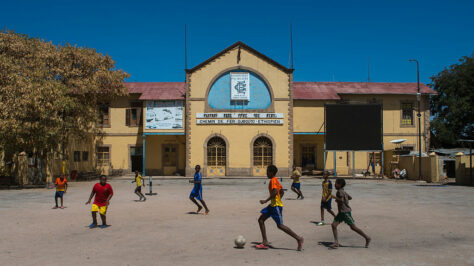
In Papua New Guinea, the SUMP project for Port Moresby aims to create the conditions for low-carbon mobility. SYSTRA’s teams are working with the local authorities and residents to define an intermodal strategy adapted to the island context and demographic pressure. The aim is twofold: to promote accessibility for all and to limit the ecological footprint of transport.
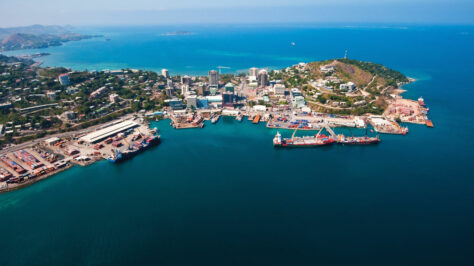
In more mature cities, such as Montreal, investment in multimodal interchanges has encouraged bimodal transport, with detailed modelling of flows and a reduction in connection times. SYSTRA deploys its transport modelling and behavioural simulation tools (such as Quetzal and Legion) to optimise the design and sizing of modal interfaces. Dynamic modelling for pedestrians and cyclists, as well as road access tests, enable the MEP to be designed as a genuine catalyst for modal transfer.
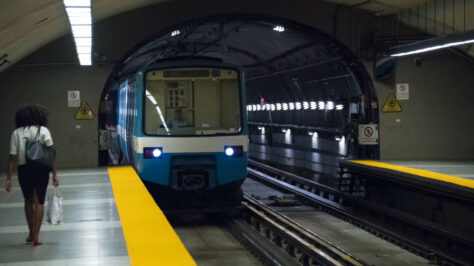
The example of Old Oak Common in London illustrates how a station can become the driving force behind an integrated urban transformation. Connecting the future HS2 high-speed line, the regional networks (Great Western Main Line), the Heathrow Express airport shuttle and the Underground’s Elizabeth Line, this intermodal station is part of a vast urban regeneration operation. According to an analysis by Arcadis, more than 19,000 jobs and 22,000 homes are expected in the area by 2025. The development of the forecourt, cycle paths and interface with local transport make this project a model of intermodal, urban and environmental integration.
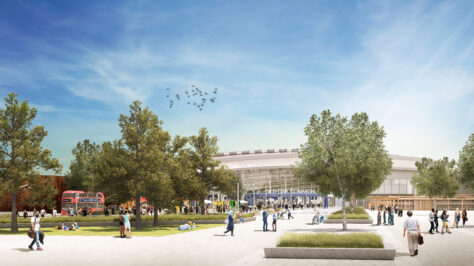
A few thousand kilometres away, the West Kowloon terminal has connected Hong Kong to the rest of China through a fine, almost seamless interface between long-distance high-speed rail and the urban metro network (MRT). In addition to its architectural beauty, the station has been designed to integrate the existing networks within a multimodal hub and a residential, business and cultural district. By taking the road network underground, for example, it has been possible to integrate the whole complex into the surrounding urban fabric and create a continuity on the surface that is conducive to walking, which is essential to the vitality of the commercial and cultural activities surrounding the terminal.
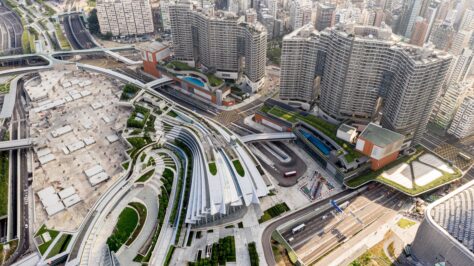
Use the system as a lever
Intermodality is not a miracle solution, but a paradigm shift. It requires a systemic vision of mobility, closer cooperation between players, and constant attention to actual usage and changes in demand.
In areas undergoing change, it is an opportunity to structure transport provision in a sustainable way. In metropolitan areas that are already densely populated, it is the only way to make the system more fluid, more economical, and more attractive. It also enables the benefits of major infrastructure projects to be maximised, by ensuring that they form part of a coherent network. Whatever the geography, the evidence is clear: integration benefits all modes of transport that join it.
At SYSTRA, this vision is embodied in all our projects, where intermodality is always seen as a lever for sustainability, efficiency and the transformation of the region. In the face of climate, energy and social crises, intermodality is also an essential tool for urban resilience and spatial justice, for mobility that is accessible to all and integrated into local dynamics.
Modal shares and geographical disparities
| CITY | MODAL SHARE |
| Paris, France1 | ● Walking: 52% ● Public transport: 32% ● Car: 13% ● Bicycle: 3% |
| London, United Kingdom2 | ● Public transport: 37% ● Car: 36% ● Walking: 24% ● Bicycle: 3% |
| Singapore3 | ● Public transport: 44% ● Car: 29% ● Walking: 22% ● Bicycle: 1% |
| Santiago, Chile4 | ● Active Mobilities: 38.5% ● Car: 30.8% ● Public transport: 18.5% ● Other: 12.2% |
| Jakarta, Indonesia5 | ● Car and motorcycles: 77% ● Shared mobility: 13% ● Public transport: 10% |
| Mumbai, India6 | ● Public transport: 45% ● Walking: 27% ● Cars and motorcycles: 22% ● Bicycle: 6% |
1Source : ADETEC expertise report, July 2021
2Source : Institut Paris Région report, October 2019
3Source : Institut Paris Région report, October 2019
4Source : Observatorio de Movilidad Urbana, 2015
5Source : TUMI Initiative et Jakarta Transport Agency, 2022
6Source : TUMI Initiative, 2022


 Brazil
Brazil  Canada
Canada  Chile
Chile  China
China  Columbia
Columbia  Denmark
Denmark  Egypt
Egypt  France
France  India
India  Indonesia
Indonesia  Ireland
Ireland  Italy
Italy  Malaysia
Malaysia  Norway
Norway  New Zealand
New Zealand  Panama
Panama  Peru
Peru  Poland
Poland  Portugal
Portugal  Saudi Arabia
Saudi Arabia  Singapore
Singapore  South Korea
South Korea  Spain
Spain  Sweden
Sweden  Taiwan
Taiwan  Thailand
Thailand  Türkiye
Türkiye  United Kingdom
United Kingdom  United States
United States  Vietnam
Vietnam